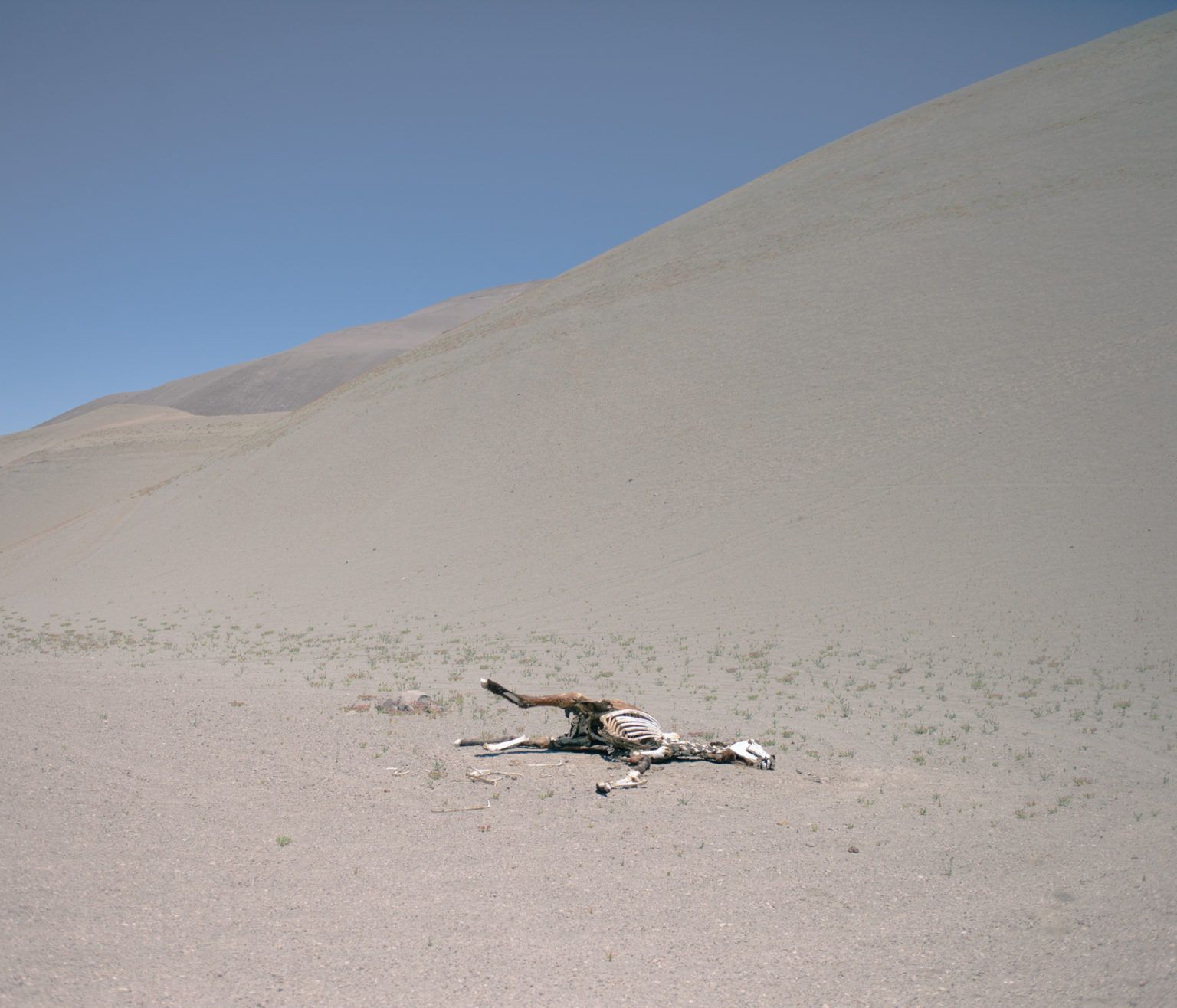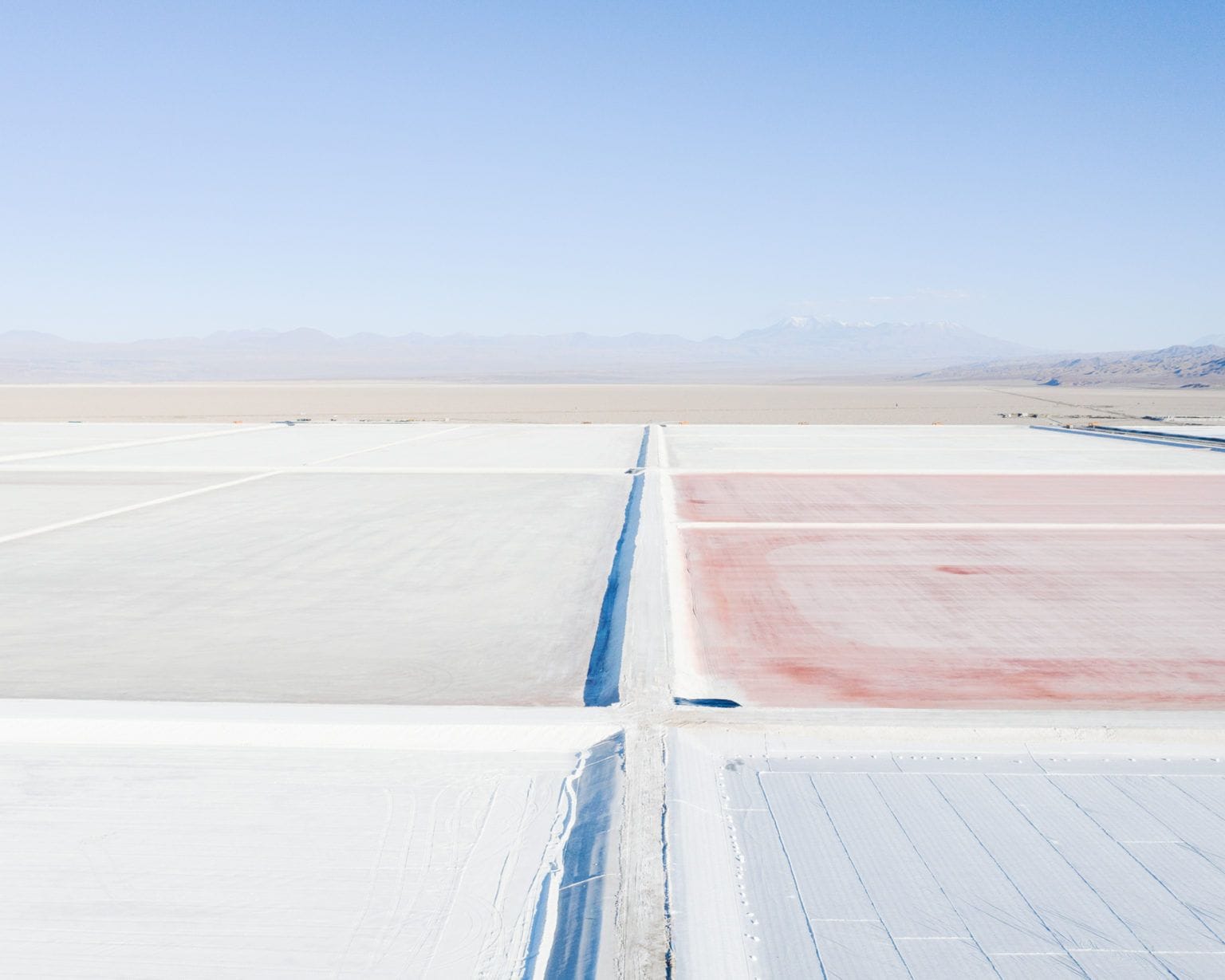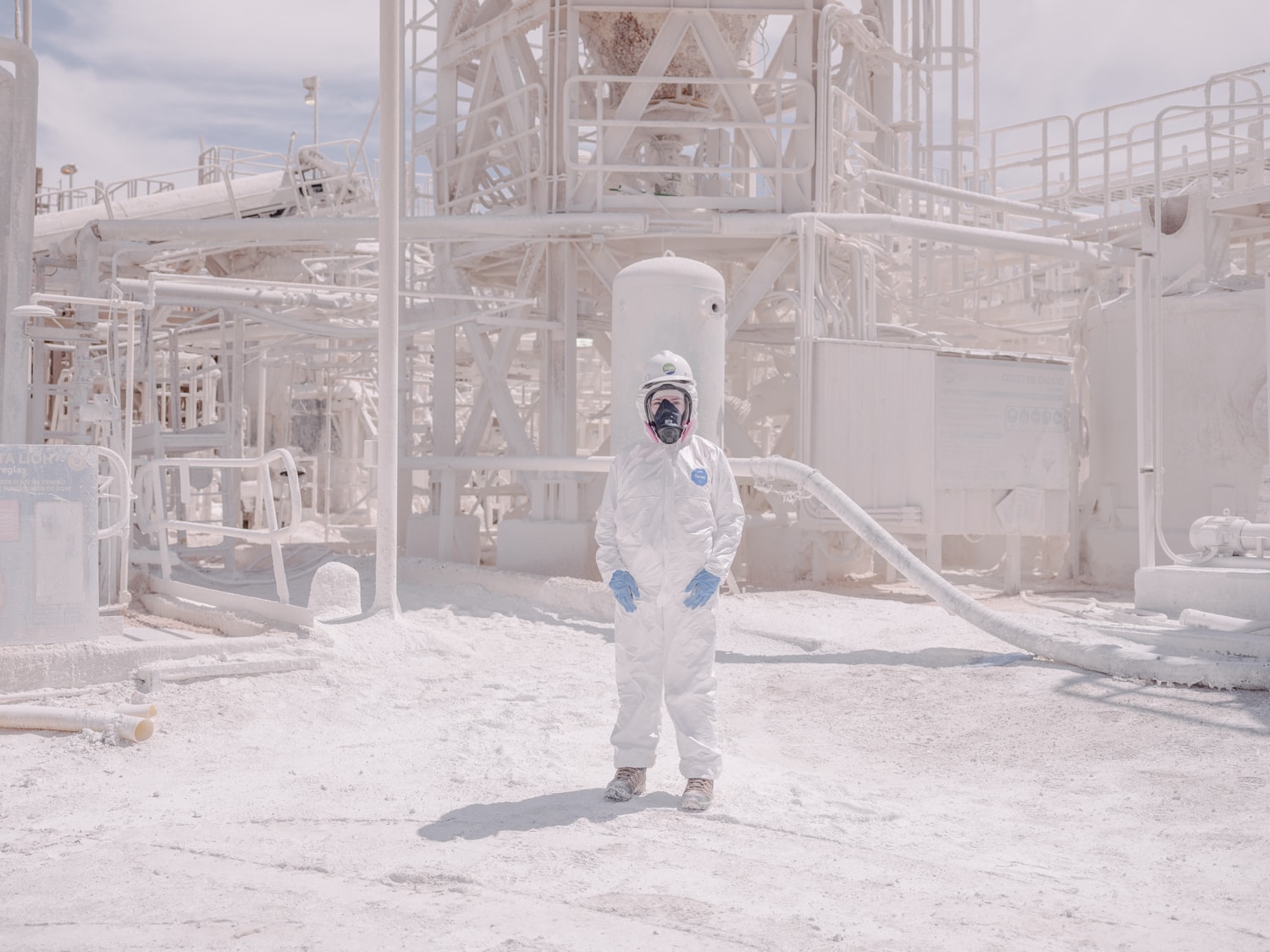
Humans, minerals, and the desert
In 2016, Chilean photographer Marcos Zegers began a journey through the Atacama Desert that would become a project in which several themes united by extractivist intersect. He began looking for infrastructure in that region of northern Chile, and the road led him to see the effects of mining on the landscape. The work, which has gone through several phases, had as one of its results the edition of the photobook El Paisaje Mineral Tiene el Cielo Celeste y Dos Montañas Blancas .
By Marcela Vallejo
“I know New York, although I’ve never been there,” says Chilean photographer Marcos Zegers, “and I know how to take a cab and what color they are.” He has seen so many photos of that city, Tuscany, or the Sahara, that he could describe them perfectly, “as if one were an artificial intelligence.” Zegers likes to play with imaginaries. Therein lies the basis of his photographic work, and that’s why he decided to play with those corresponding to an essential region of his country: the desert.
In 2016 he started a project on the Atacama Desert, the most arid desert in the world. At first, it was called Infraestructuras del Desierto, an almost typological search of the architecture in that region. Zegers is an architect by training and dedicates part of his time to architectural photography. So perhaps that was the first approach. However, once he had an extensive collection and could see it in its entirety, he realized there was something else: the relationship between extractivism and territory. The name changed to Agua, minería y éxodo.
The territory has been a transversal theme in this photographer’s previous works. He started in 2011 with the project Asentamientos Territoriales, and continued with Fuegos in 2017. With his work in the desert, Zegers has managed to sediment some ideas that have been nurtured in those other projects but that in this one, mainly, manage to move imaginaries.
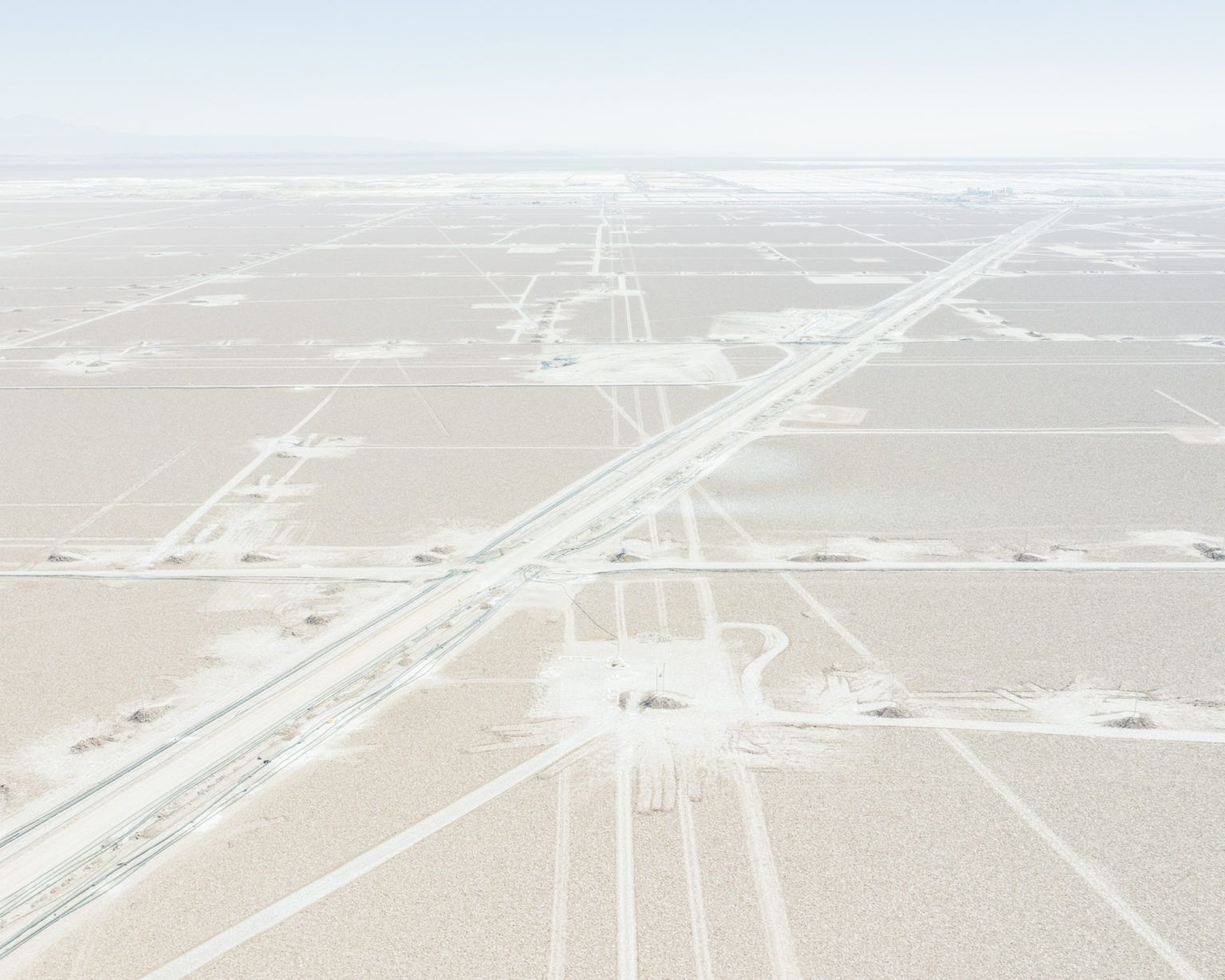
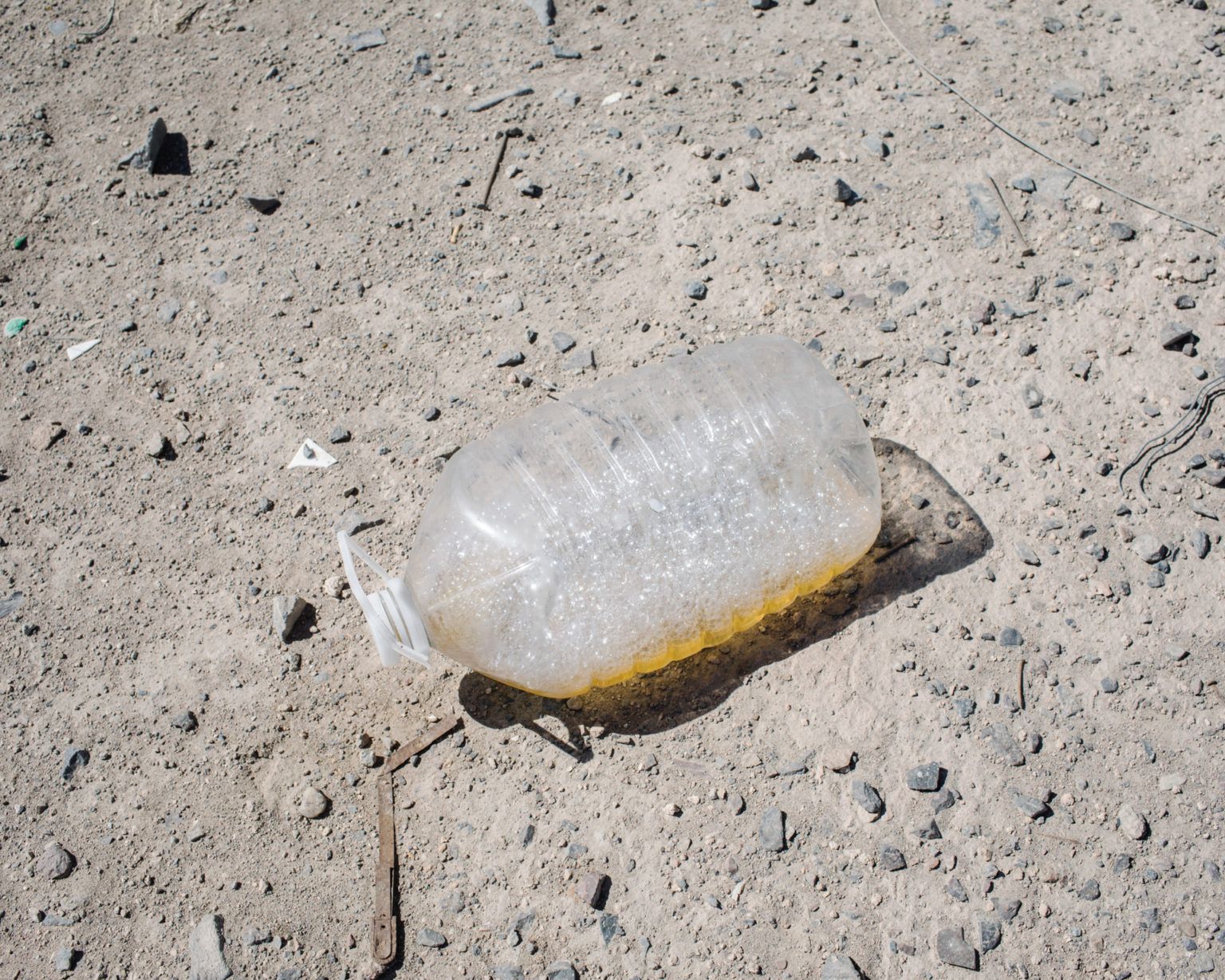
“In Chile,” says the photographer, “there is a capitalization of the pristine landscape, that is to say, we search in Google Atacama Desert and instantly beautiful skies or the perfect lagoon of San Pedro Atacama, which is the most touristic place, must appear. That has to be the image. I felt that when I went to photograph that image of the pristine landscape and turned around, there was a whole back room all to myself, a huge, open space that was extremely interesting.”
So Marcos decided to move the frame and focus on what no one else was seeing. It was at the time of editing, that it was understood that in those images there was a layer of meaning that transformed his entire initial vision, it was extractivism. “This territory is connected by saltpeter. Then it is repeated with copper, the themes with water pass and over time they begin to transform this into lithium as a much more contemporary issue.”
When talking about this project, the photographer insists that the way he chose to edit it is not very didactic: “There is no north and south, it does not start with water, continues with copper and ends with lithium”. Everything is mixed in a kind of route without exact coordinates.
“There is a side of Chile that people don’t want to see,” says Zegers. “To the north, there is mining (from copper to lithium); to the south, there is salmon fishing, and in the center south, forestry monocultures. These are three major extractive activities, the main economic activities that supply the country. So, of course, when society as a whole, not only Chilean society, but the whole world begins to understand environmental problems, a crossover is generated. But in this country we go with a half covered eye. People have intentions to take care of the territory and the environment and at the same time they do not want their economic standard to go down.”
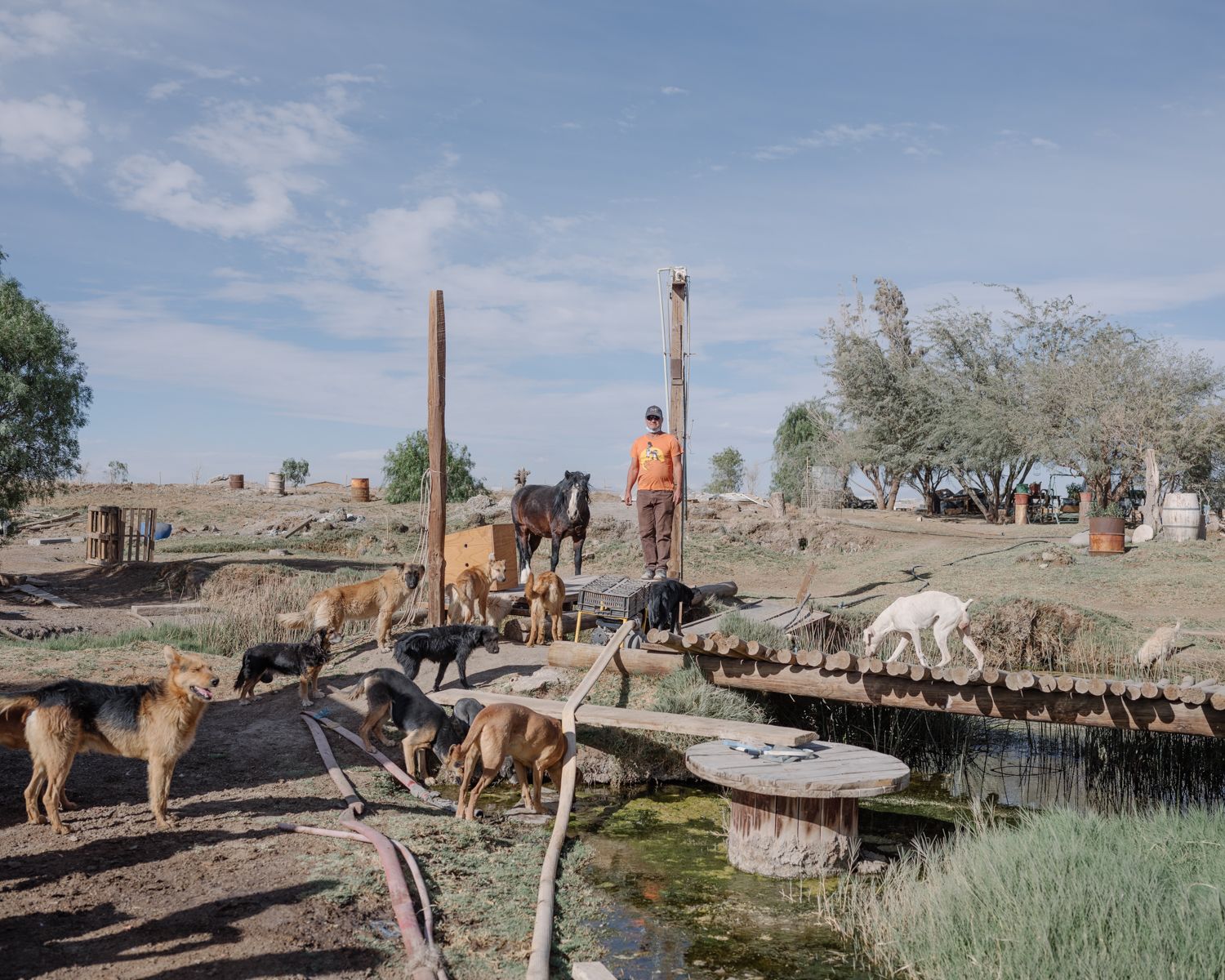
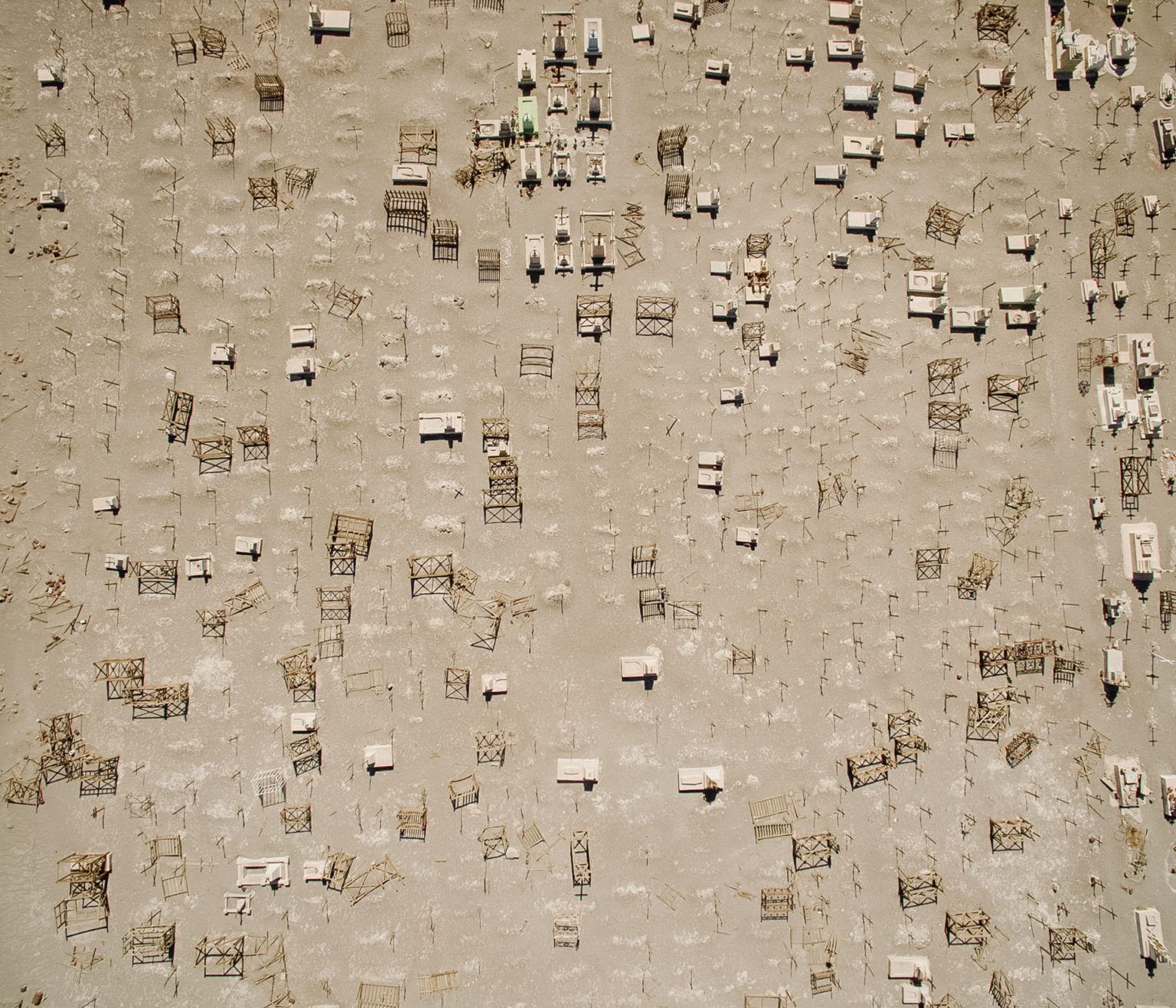
Reading the landscape as a poem
The project underwent several phases and resulted in several products, such as the photobook El Paisaje Mineral Tiene el Cielo Celeste y Dos Montañas Blancas (The mineral landscape has a blue sky and two white mountains). Although it is not didactic, as the author points out, the fact is that the work teaches something. It shows it. The title is a small poem in itself, which plays the same game as the images found in the body of the book: apparently, the elements that appear in it are autonomous from each other.
That little poem is also the announcement of something else, the sensation that there is something beautiful in those images that are not those of the ideal Chilean landscape. At the same time, the title initially achieves what Zegers set out to do with the rest of the work: to generate questions. “I wanted to make them travel and ask themselves questions like the ones we are asking ourselves: what happens to me when I look at this territory? There is a discomfort in looking at this: the photos are nice and calm, but deep down, ‘Oh, I don’t want to look at them so much from that side.’ I wanted to play much more with that from the extractivism, but not from the hard side of the data; for that, they should read a paper. I wanted to talk about photography”.
The edition poses two readings. The first is the journey, hand in hand with all the photographs. The second begins with a map drawn up by Magdalena Ulloa, the artist’s partner, companion, accomplice, and co-author of some of the works. The photographs are geo-referenced on the map, showing mining sites and indigenous settlements. There is an index with additional information about each image at the end.
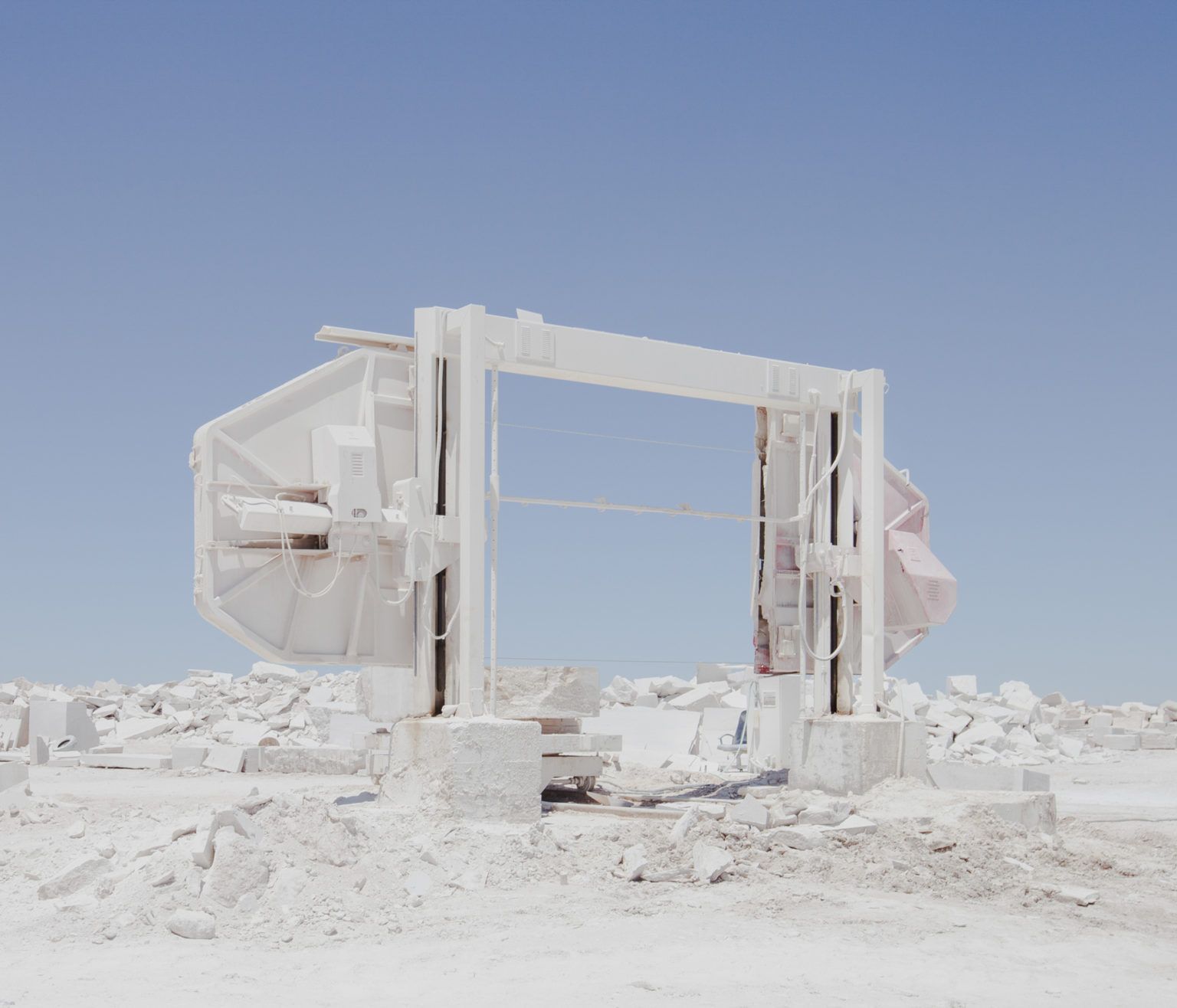
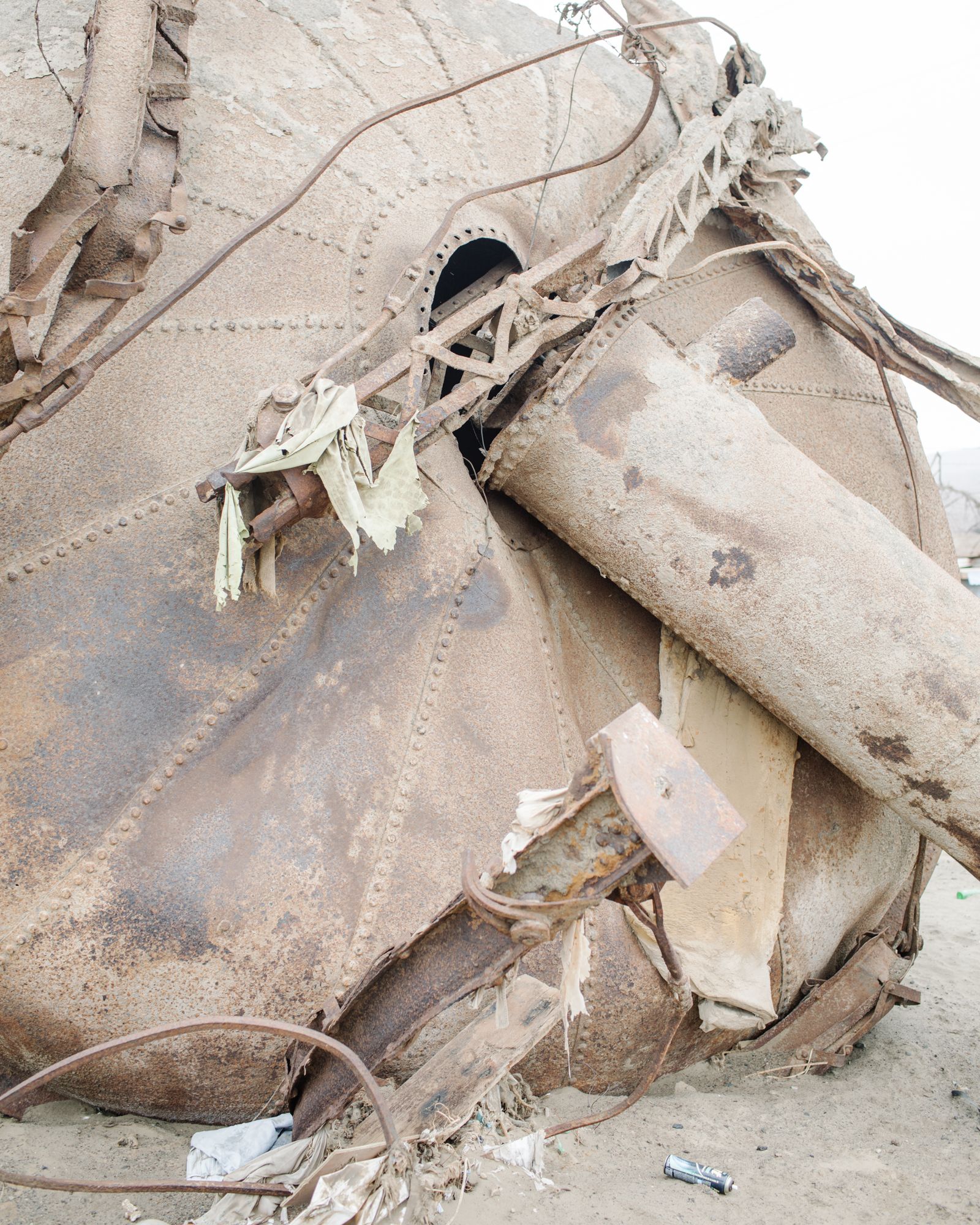
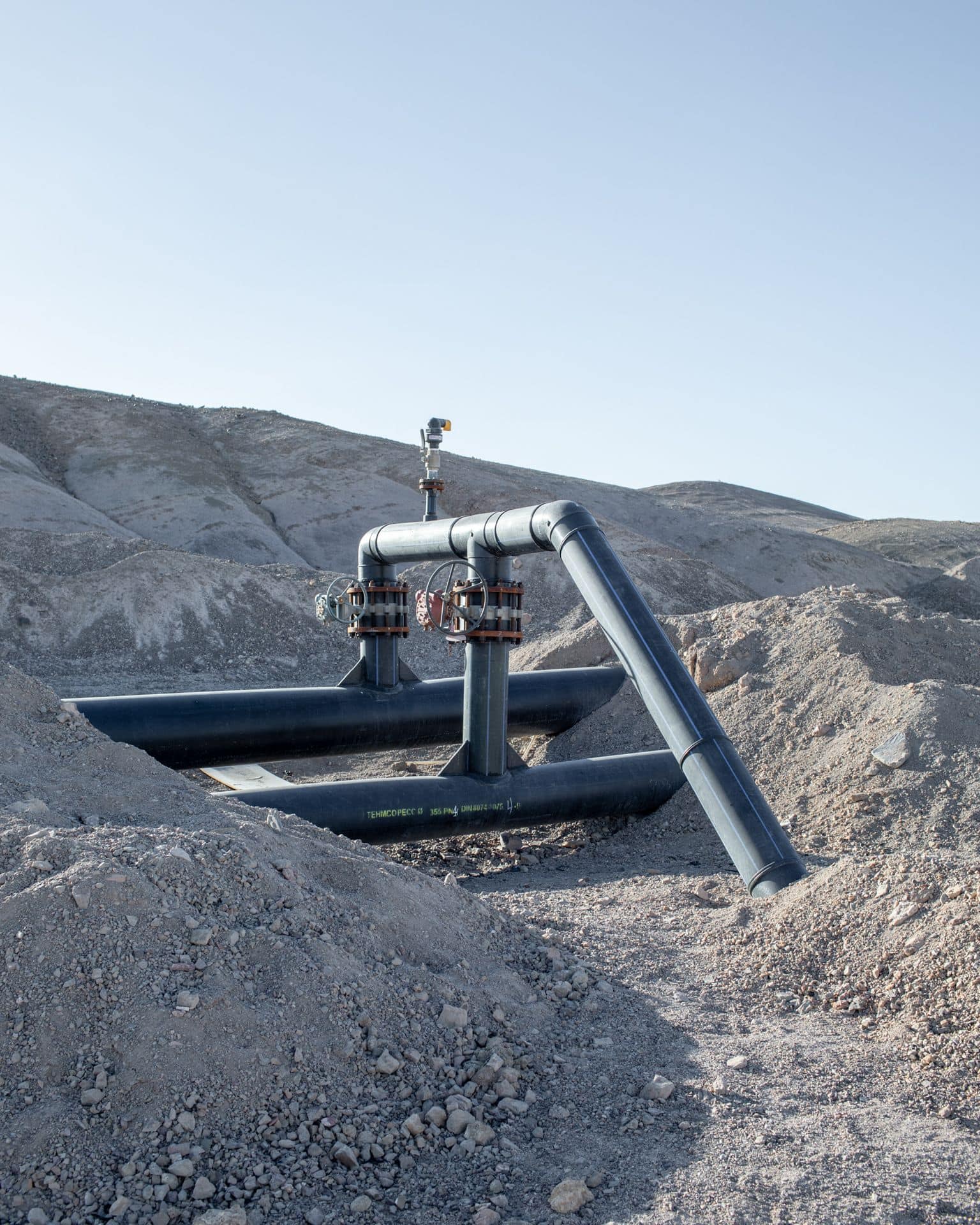
Ulloa, like Zegers, is an architect but also studied human geography. Listening to the photographer, her influence and his academic background are evident. And he makes it explicit: their daily conversation helps him shape his work, and they share several projects. The intertwining of gazes has enriched this project. It is built on several intersecting themes: territory, landscape, mining, extractivism, human forms of inhabiting places such as the desert, different populations and their movements, and the traces of human activity.
After four years of work, having made exhibitions and edited a book, this project began other conversations and new questions. In this case, Zegers’ work in the desert inspired a workshop with children in German schools on the impact of electric cars; it was the initial basis for a feature-length fiction film in the desert, among other things. The author clearly understands this process is not over: “In photography, we have to understand ourselves in a world that relates through images as a basis for other things to happen.”
